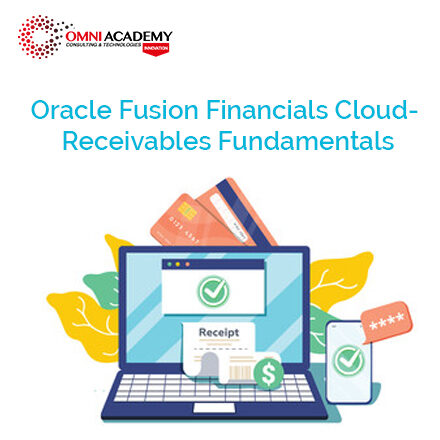Oracle BI 11g R1 – Build Repositories
This Oracle BI 11g R1 – Build Repositories training is based on OBI EE, Expert Omni Academy instructors will teach you step-by-step procedures for building and verifying the three layers of an Oracle BI repository; you’ll begin by using the Oracle BI Administration Tool to construct a simple repository to address a fictitious company’s business requirements.
Benefits to You
By taking this course, you’ll walk away with the ability to transform your organization’s data into intelligence, which will improve your day-to-day decision making. This new knowledge will help you provide time-critical, relevant and accurate
insights. Furthermore, you’ll develop skills that will help you become more efficient at building repositories.
Build Logical Business Models
This course will also teach you how to import schemas, design and build logical business models and expose business models to users in the Oracle BI user interface. While constructing the repository, you’ll learn how to build physical and logical joins, simple measures and calculation measures.
Model Logical Dimension Hierarchies
You’ll then extend the initial repository and learn how to model more complex business requirements. This includes logical dimension hierarchies, multiple logical table sources, aggregate tables, partitions and time series data.
Implement Oracle BI Server Security
Omni Academy instructors will also walk you through implementing the Oracle BI Server security and managing the Oracle BI Server cache. You’ll learn how to set up a multi-user development environment and use Administration Tool wizards and utilities to manage, maintain and enhance repositories.
Advanced Course Topics
Finally, investing in this course will give you a chance to explore more advanced topics, like implicit fact columns, bridge tables, usage tracking, multilingual environments, write back and patch merge. An appendix is included, which covers architecture and the benefits of the Oracle Exalytics BI Machine.
Course Content:
Repository Basics
- Exploring Oracle BI architecture components
- Exploring a repository’s structure, features, and functions
- Using the Oracle BI Administration Tool
- Creating a repository
- Loading a repository into Oracle BI Server
- Installing the BI Client software
- Overview of Exalytics Machine
Building the Physical Layer of a Repository
- Importing data sources
- Setting up Connection Pool properties
- Defining keys and joins
- Examining physical layer object properties
- Creating alias tables
- Printing the physical layer diagram
Building the Business Model and Mapping Layer of a Repository
- Building a business model
- Building logical tables, columns, and sources
- Defining logical joins
- Building measures
- Examining business model object properties
- Printing the business model and mapping layer diagram
Building the Presentation Layer of a Repository
- Exploring presentation layer objects
- Creating presentation layer objects
- Modifying presentation layer objects
- Examining presentation layer object properties
- Nesting presentation tables
- Controlling presentation layer object visibility
Testing and Validating a Repository
- Checking repository consistency
- Turning on logging
- Uploading the repository through Enterprise Manager
- Executing analyses to test the repository
- Inspecting the query log
Managing Logical Table Sources
- Adding multiple logical table sources to a logical table
- Specifying logical content
Adding Calculations to a Fact
- Creating new calculation measures based on logical columns
- Creating new calculation measures based on physical columns
- Creating new calculation measures using the Calculation Wizard
- Creating measures using functions
Working with Logical Dimensions
- Creating logical dimension hierarchies
- Creating level-based measures
- Creating share measures
- Creating dimension-specific aggregation rules
- Creating presentation hierarchies
- Creating parent-child hierarchies
- Creating ragged and skipped-level hierarchies
Enabling Usage Tracking
- Creating the usage tracking tables
- Setting up the sample usage tracking repository
- Tracking and storing Oracle BI Server usage at the detailed query level
- Using usage tracking statistics to optimize query performance and aggregation strategies
Using Model Checker and Aggregates
- Using Model Check Manager
- Modeling aggregate tables to improve query performance
- Using the Aggregate Persistence Wizard
- Testing aggregate navigation
- Setting the number of elements in a hierarchy
Using Partitions and Fragments
- Exploring partition types
- Modeling partitions in an Oracle BI repository
Using Repository Variables
- Creating session variables
- Creating repository variables
- Creating initialization blocks
- Using the Variable Manager
- Using dynamic repository variables as filters
Modeling Time Series Data
- Using time comparisons in business analysis
- Using Oracle BI time series functions to model time series data
Modeling Many-to-Many Relationships
- Using bridge tables to resolve many-to-many relationships between dimension tables and fact tables
Setting an Implicit Fact Column
- Ensuring the correct results for dimension-only queries
- Selecting a predetermined fact table source
- Specifying a default join path between dimension tables
Importing Metadata from Multidimensional Data Sources
- Importing a multidimensional data source into a repository
- Incorporating horizintal federation into a business model
- Incorporating vertical federation into a business model
- Adding Essbase measures to a relational model
- Displaying data from multidimensional sources in Oracle BI analyses and dashboards
Security
- Exploring Oracle BI default security settings
- Creating users and groups
- Creating application roles
- Setting up object permissions
- Setting row-level security (data filters)
- Setting query limits and timing restrictions
Cache Management
- Restricting tables as non-cacheable
- Using Cache Manager
- Inspecting cache reports
- Purging cache entries
- Modifying cache parameters and options
- Seeding the cache
Exploring the Summary Advisor Tool
- Setting up Summary Advisor
- Running the Summary Advisor wizard to create the aggregate script
- Running the aggregate script to create the aggregates
Using Administration Tool Utilities
- Using the various Administration Tool utilities
- Using BI Server XML API to create XML representation of repository metadata
Multiuser Development
- Setting up a multiuser development environment
- Developing a repository using multiple developers
- Tracking development project history
Performing a Patch Merge
- Comparing repositories
- Equalizing objects
- Creating a patch
- Applying a patch
- Making merge decisions
International Student Training Fee : 350 USD | 1300 SAR | 1300 AED
Job Interview Preparation (Soft Skills Questions & Answers)
- Tough Open-Ended Job Interview Questions
- What to Wear for Best Job Interview Attire
- Job Interview Question- What are You Passionate About?
- How to Prepare for a Job Promotion Interview
 Your FREE eLEARNING Courses (Click Here)
Your FREE eLEARNING Courses (Click Here)
Internships, Freelance and Full-Time Work opportunities
Flexible Class Options
- Week End Classes For Professionals SAT | SUN
- Corporate Group Trainings Available
- Online Classes – Live Virtual Class (L.V.C), Online Training
Similar Courses
Oracle Financials Cloud: General Ledger 2017 Implementation Essentials – 1Z0 960
Oracle Financials Cloud: Receivables 2017 Implementation Essentials – 1Z0 962
Oracle Financials Cloud: Payables 2017 Implementation Essentials – 1Z0 961
Oracle E-Business Suite: R12 HCM/ HRMS Complete Course
Oracle E-Business Suite: R12 Financials Complete Course
Oracle E-Business Suite: R12 Supply Chain Complete Course
Oracle BI 11g : OBIEE – Build Repository
Oracle BI 11g : OBIEE – Create Analyses and Dashboards
Oracle Forms Developer Course – Build Internet Applications
Oracle E-Business Suite: R12 Applications Admin – DBA
Oracle Database Admin 11G DBA – OCP | OCA
Oracle ERP Implantation & Support Services
Need Oracle ERP E-Business Suite | Fusion Cloud Implementation Services
Need Oracle ERP Healthcheck or Database Support Services
[/vc_column_text]









